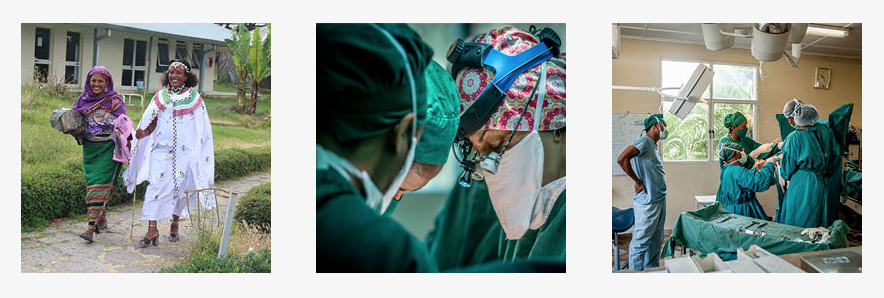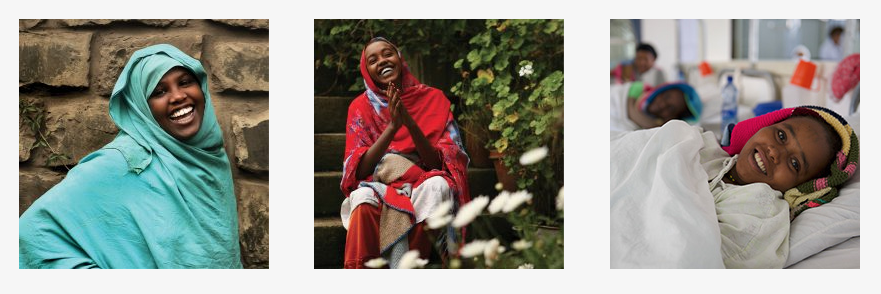The United Nations’ Report on Obstetric Fistula 2020 calls for a surge in efforts to eradicate obstetric fistula. The report outlines the gender and socioeconomic inequalities which result in fistula, as well as the measures necessary for the eradication of fistula by 2030. Highlighting the challenges that the COVID-19 pandemic has created for women in developing countries seeking maternal care, the report reiterates the need for a human rights-based perspective in treating fistula. The UN report reaffirms the core tenets of Hamlin Fistula Ethiopia‘s holistic approach to fistula.
The UN’s perspective on fistula
The Secretary-General’s report into intensifying efforts to end obstetric fistula within a decade was prepared in response to the UN General Assembly Resolution 73/147. That resolution, from 2018, called for greater action and increase investment to end fistula. It was not until 2007 that fistula was acknowledged as a major women’s health problem by the General Assembly. Since then, the UN has initiated numerous programs, summits, and working groups to eradicate fistula. UN branches involved in the global efforts to eradicate fistula include UNFPA, UNICEF and UN-Women.
Eradicating fistula, as part of universal health coverage, is essential to the realisation of the UN’s Sustainable Development Goals (SDG). The fistula report argues that achieving the SDGs require “equitable access to timely, quality and life-saving maternal and newborn healthcare.” In 2019 over 9,500 participants from more than 170 countries convened at the Nairobi Summit on the International Conference on Population and Development (ICPD25). The Nairobi Summit marked the 25th anniversary of the first International Conference on Population and Development held in Cairo. The summit sought to extend the commitment to sexual and reproductive health set in the SDGs by striving for ‘three zeroes’:

The state of fistula worldwide
Globally, fistula remains an issue in 55 nations. The UN’s fistula report indicates that the plight of fistula patients is only exacerbated during crises such as a pandemic. Around the world, fistula repair surgeries have widely been suspended as officials deem them to be non-urgent and hospitals have diverted resources to managing COVID-19. Nevertheless, the plight of fistula patients remain – as does their need for essential fistula repair surgery.
It is estimated that 500,000 women live with fistula worldwide, with new cases occurring every year. The data on fistula cases – both in Ethiopia and worldwide – remains difficult to collate. Ethiopia is yet to fully map the number and location of fistula cases in the country. Nevertheless, the report says that in recent years “progress has been made in improving the availability of fistula data.”
Programs to address fistula have been developed in Africa, the Middle East, the Asia-Pacific and Central America. The UN report highlights Hamlin Fistula Ethiopia’s work in training fistula surgeons from across the globe at its centre of excellence, the Addis Ababa Fistula Hospital, through the FIGO training scheme. The report states that “South-South cooperation is a key strategy in order to build national capacity for fistula management… Hamlin Fistula Ethiopia have supported highly-skilled fistula surgeons from all regions of the world to provide fistula training mentoring and treatment in the highest burden fistula countries.”

Key findings
The backlog of fistula patients is immense, however, these women can be cured through coordinated efforts with governments and other agencies, such as Hamlin Fistula Ethiopia. The fistula report notes the need for geographical analyses of countries so that authorities understand the effectiveness and extent of the state’s maternal health networks. Moreover, through surveying a population, we can better map out the nature and extent of fistula in that country. Earlier this year, Hamlin undertook a Patient Identification Program in a coordinated effort to reach every woman with fistula.
The UN argues that “to ensure that all women and girls, especially the poorest and most vulnerable, have adequate access to reproductive health care, efforts need to be intensified and urgent steps taken, even during public health emergencies.” Throughout the COVID-19 crisis, Hamlin has continued to treat fistula patients using COVID-safe protocols. Students at the Hamlin College of Midwives have continued their studies, albeit from home.
The fistula report frames its conclusions around four categories: prevention and treatment strategies and interventions; financial support for universal access to fistula prevention and care; reintegration strategies and interventions; and advocacy and awareness-raising.

Prevention and treatment strategies and interventions
- “Ensure investment and planning to preserve… and enhance fundamental obstetric services… (including quality antenatal, intrapartum and postnatal care) with adequate, well-trained skilled medical personnel (i.e. midwives).”
- Actions to eliminate fistula “must incorporate prevention, treatment, socioeconomic reintegration and follow-up of fistula.”
- Ensure that maternal health services provide “fistula treatment and family planning services [that are] financially and culturally accessible including in the most remote areas.”
- “Improve quality of surgical training and obstetric healthcare in countries to prevent all types of fistulas.”
Financial support for universal access to fistula prevention and care
- Fistula treatment needs to “address inequities and reach poor and vulnerable women and girls, including the provision of free… maternal and newborn health care and fistula treatment to all those in need.”
- “Enhance international cooperation including intensified technical and financial support, especially to high-burden countries, to end fistula within a decade.”
- “Mobilise public and private sectors to ensure that needed funding is increased, predictable, sustained, and adequate – including for a global road map – to end fistula.”
Reintegration strategies and interventions
- “Ensure that all fistula survivors, including those deemed incurable or inoperable, have access to social reintegration services, including healthcare, counselling, education, skills development, income-generating activities, and family and community support.”
- “Assist women in preventing another fistula after successful repair, including education, family planning and caesarean delivery planning.”
Advocacy and awareness-raising
- “Empower fistula survivors to sensitise and mobilise [their] communities, as advocates for fistula elimination and safe motherhood.”
- “Strengthen research, data collection, monitoring and evaluation to guide the planning and implementation of maternal and newborn health programs.”

The UN’s fistula report provides a framework for the efforts to eradicate fistula. It reaffirms much of the core tenets of the Hamlin Model of Care, including the pivotal role of midwives in preventing fistulas from occurring in the future.
Click here to support the life-saving work of Hamlin Fistula Ethiopia.
